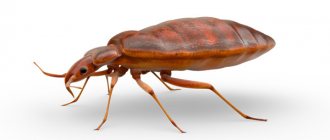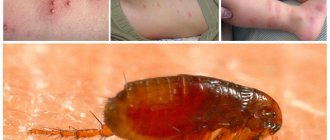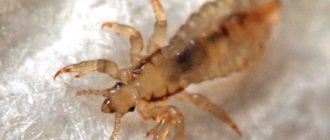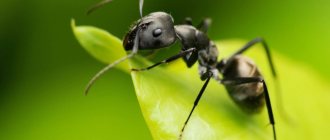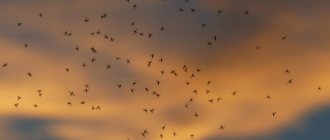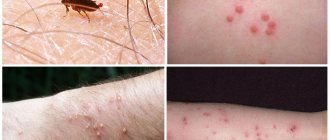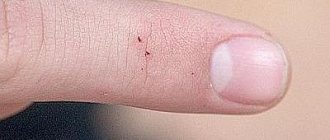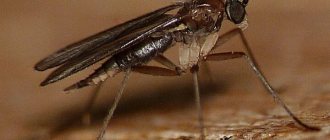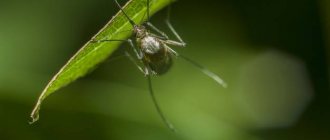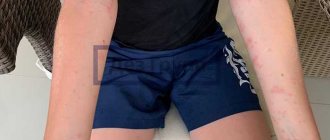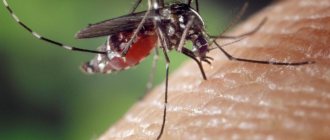Bedbugs are blood-sucking insects with a flattened oval body shape ranging from 3 to 8 mm in length. The color and size of bedbugs depends on their age and degree of blood saturation. The adult individual is light brown to brown in color. After the bug drinks blood, the color can change from bright red to almost black. The average lifespan of bedbugs is from 1 to 1.5 years.
Bedbug bites are their way of feeding to support life. Bedbugs feed exclusively on the blood of people, birds and animals.
Unfortunately, in our time, no one is safe from the appearance of such extremely unpleasant insects as bed bugs. Stereotypes that these insects appear only in unsanitary conditions are long gone.
At the moment, a connection between bedbug bites and infection through a bite with various diseases has not been found. Nevertheless, bedbugs greatly poison our lives, interfering with restful sleep, thereby reducing productivity.
What do bedbug bites look like?
Every year the number of people suffering from bites of these parasites is growing. If, after waking up, you notice a lot of round red swellings on your body, do not rush to refer to a mosquito bite; perhaps parasites called “bugs” have come into your home.
The main difference is the massive, tightly spaced and grouped bites. Typically, bed bug bites are located in one line. The number of bites of one bug is also typical - 3 - 5 punctures of the skin at a distance of 2 - 4 centimeters from each other.
How to recognize bedbug bites and how they differ from traces of other pests
At first glance, home bug bites can be mistaken for the consequences of a night mosquito attack. However, the swollen red “buttons” on the body have a number of differences from mosquitoes:
- The lesion has a more defined shape, whereas a mosquito bite is usually blurry, with unclear boundaries.
- The wounds are located close to each other. At night, the bug bites a person several times, and does not make long journeys through the body between attacks.
- A cluster of wounds is easily connected by one line.
- Bites will not wake you up at night, as the bug injects an anesthetic into the bloodstream to continue hunting. But in the morning they will start to itch more than mosquitoes.
Traces of attacks by other insects (fleas, midges, etc.) will also be located chaotically. The pain will be stronger because only the bug numbs the site of the attack. Midge attacks leave small wounds that can be easily identified by droplets of dried blood in the center.
Large aggressive insects - wasps, hornets, bees - sting harder than bedbugs, and do not hide their presence. Their bites are larger in diameter and swell rapidly. In this case, problems with identifying the insect usually do not arise: the bite is so painful that it will wake you up from even the deepest sleep.
The difference between bedbug bites and an allergic reaction
In most cases, bedbug bites are misdiagnosed as scabies or an allergy to something. But there are significant differences between a bedbug bite and an allergic reaction.
- The redness from the bite is not continuous, it is located in a path.
- The allergic rash is spread over the entire surface of the body, and not in any individual open areas.
- The bite mark, as a rule, does not change over time; the size, color and shape of the allergy rash can change quite quickly.
- Other family members did not notice anything suspicious on their skin, unlike the victim.
How to find out if there are bedbugs at home?
The main sign of a swarm of bedbugs in your home is the characteristic smell of cognac or sour raspberries. But this is only if there are really a lot of bedbugs at home.
Bedbugs in small numbers can leave traces of your blood on the sheet.
Important! Check your sheets carefully after staying overnight in a hostel or after spending the night as a guest. This will prevent the appearance of bedbugs in your home and prevent possible consequences of bites for your body.
The difference between bedbug bites and the bites of other insects, such as mosquitoes, fleas, etc.
It is somewhat more difficult to distinguish a bedbug bite from the bites of other insects, since all bites look approximately the same - a red spot accompanied by itching.
From a mosquito bite, a bug bite differs in a more defined shape. Flea bites are distributed randomly on certain areas of the skin (most often the affected areas are the legs, up to the knees), while bedbug bites are located approximately in one line. The pain from a midge bite is stronger, but the bite wound itself is smaller, with a drop of dried blood in the middle. Bites of large insects (bees, hornets, wasps) are always remembered by a person because of acute pain. Bed bugs bite unnoticed and the bite can be detected after some time.
Bites from other types of bedbugs
Types of bedbugs
In addition to the usual bed bugs, there are other types of bedbugs in nature that can also bite a person:
- Water scorpions are insects similar to their terrestrial counterparts, they live in lakes, ponds and rivers, they bite only for protection, but do not drink blood. The bite of such a scorpion is quite painful.
- It is not for nothing that smooth water bugs have received the nickname “water wasps” among the people, because they can sting a person in self-defense quite noticeably and unpleasantly.
- Tropical bugs or predators, which are brightly colored and large in size, can cause fatal injury to humans, although they feed on mollusks and other insects;
- Triatomine bugs, or kissing bugs, are so named because their bite marks are often found near the lips. They are carriers of Chagas disease, which kills many people every year in tropical jungles.
Symptoms of bed bug bites
Bedbugs mainly bite exposed areas of the body: legs, arms, neck, face, shoulders. The bite itself can manifest itself differently in each person.
Typically, the main symptoms of a bedbug bite include severe redness, round swelling, and severe and irritating itching. Unlike mosquito bites, bedbug bites are more painful and more clearly defined. In some cases, an allergic reaction is possible, but this is rare.
Bedbug bite marks are a reaction to the saliva that the bedbug secretes before the bite so that the blood is better prepared for intake. Because of this, the bite mark of a bedbug lasts longer than that of other insects.
What’s interesting is that if you are bitten by an adult bedbug, you may not see a reaction right away. If the animal is young, then most likely the reaction will not take long to occur - it will manifest itself instantly. This is due to the fact that young bedbugs, unlike adults, are not able to secrete saliva, which contains a substance that acts as an anesthetic.
So, to summarize, the symptoms of bedbug bites are as follows:
- Redness
- Itching
- Swelling
- Grouped bites (3 - 5 skin punctures at a distance of 2 - 4 centimeters from each other).
Also, bedbugs have a special smell, because... they have odorous glands, the openings of which are located on the chest in adults, and on the abdomen in larvae. If you crush a bug, which is very difficult in principle, you can smell their specific smell. By the way, opinions differ regarding the smell: some believe that bedbugs smell of something sweet, like spoiled raspberries, others say cognac, and others claim that a room with bedbugs smells like almonds.
Symptoms
Indeed, bedbug bites are similar in symptoms to many insect bites (especially mosquitoes), but there are still differences. Before we move on to describing these symptoms, let's look at the structure of the proboscis and the way the bedbug feeds. Because without this, you and I will not understand many of the features of the life and nutrition of these parasites.
An adult Cimex lectularius has two tubules inside its proboscis. When it pierces a person’s skin with its proboscis, it first injects an anesthetic substance (a natural secretion) into the blood from one tubule. This substance anesthetizes the site where the blood is sucked and prevents it from clotting. A kind of natural local anesthesia.
For this reason, many people for a long time cannot even suspect that some parasites have appeared in their house and every night they dine on their blood, citing food allergies, for example (they ate something wrong in the evening). Then it remains a matter of little things.
Simply use the second tubule to absorb the required amount of blood into your body. But it is not enough for him to make one puncture on the skin. He must make 3 - 5 punctures to get enough. That's what nature came up with.
Let's move on to the symptoms on human skin:
- redness on the skin in the form of a track;
- itching on the skin (and the itching may not appear immediately);
- numerous wounds or tumors at the bite sites;
- closed and puffed up transparent skin at the site of bite wounds, with whitish contents inside.
What do bedbug bites look like in a person who is not allergic to insect bites (normal appearance), look at the photo.
Moreover, the symptoms and obvious signs of bites may vary, depending on the characteristics of the victim’s body.
If you are not allergic to insect bites, then there will be redness on the skin without any swelling, pustules or thickening. Itching will appear closer to the morning, because the bug begins to feed, as mentioned above, closer to 3 a.m. and after a few hours the substance that anesthetized the bites will stop working.
The number of bites a person gets depends on the number of bedbugs in the house. If you brought these parasites from work or from walking your dog in the park, then most likely there will not be many bites. Because the reproduction process of these insects has not yet begun and any changes on the skin will not be very noticeable.
But if you come to visit your friend and he has an old bed or some other furniture, then it is quite possible that it is stuffed with a whole swarm of bedbugs, which are already reproducing quite actively and have been annoying the owner of the house for a long time.
Numerous wounds and tumors at the site of bedbug bites may indicate the presence of allergies in a person. The skin in places will swell, the area of wounds and redness will increase, pus will ooze from the wounds, because with severe itching, a person with uncut nails and unwashed fingers will introduce an infection that will worsen his health.
Skin irritations from numerous bug bites can spread to a completely healthy person (who does not have allergies).
Closed and puffed up transparent skin at the site of bedbug bites indicates that these are no longer fresh wounds from the bites of these insects. The protective function of the skin will cover open wounds with a thin film to prevent the entry of a new infection, and the whitish content underneath is the accumulation of many dead blood leukocytes that died fighting the infection that got into the open wounds.
Many websites about bedbugs say that they are carriers of dangerous infectious diseases, such as:
- smallpox;
- tuberculosis;
- typhus;
- anthrax;
- brucellosis;
- hepatitis B;
- plague;
- malaria, etc.
But there are no scientifically proven facts about specific people getting these diseases from Cimex lectularius bites.
Also, the myth that bed bugs bite only women and children due to the fact that they have thin and delicate skin is not true.
The bug bites through exactly those places where the layer of skin is the thinnest; both women and men have such places. After all, if you look at bedbug bites on a person (see photo above), you can see that the bedbug left bites on the arms, legs, face, neck, stomach, and soft places on the back (near the kidneys). That is, in those places where there is no thick layer of skin on the body. But there are no bites on the feet or palms.
One bug bite or even several will not have any strong consequences on the human body, even if he is allergic to insect bites. The situation changes in a completely different direction when bedbug bites on a child or adult reach tens or hundreds of times the number of punctures on the skin.
From external symptoms on the skin, let's move on to the exact signs of bedbugs in the house.
When and who do bedbugs bite first?
It is known that the activity of these parasites is concentrated at night and early morning hours, i.e. in the dark, when a person sleeps especially soundly. People notice the bites themselves only in the morning.
If your living space is heavily infested with bedbugs, hungry insects can bite not only at night, but also during the day, although this is not typical for them. Therefore, the faster you get rid of bed bugs, the faster you can be calm in your apartment.
The sensation of bed bug bites is often subjective and individual. For example, women and children most often complain about bites. Their skin is thinner and softer, therefore, the blood vessels are located closer, which attracts the bug.
Adult men are less sensitive to bites, and sometimes they may not notice them at all. Rumors that bedbugs bite people selectively, and especially those who are carriers of certain blood groups, are erroneous. Bedbugs bite everyone, but the reaction to a bite varies from person to person. So, there is no connection between the frequency of bedbug bites and a person’s blood type.
Consequences of bites for the body as a whole
It is impossible to predict the consequences. Each organism is individual, as is the reaction to a bite. It is worth noting that children of bedbugs cause the same harm to humans as adults. If bedbugs have left bites on the body, they must be disinfected. Otherwise, an infection may develop on the wound, which will lead to a severe deterioration in the general condition.
After bedbugs leave bites on a person’s body, itching and burning appear, causing irritability, insomnia and even depression. You must immediately relieve the itching and begin exterminating insects.
How do bedbugs bite?
Any blood-sucking insect has its own feeding habits. Bed bugs are no exception. There are many specific details in how bedbugs bite. The oral apparatus of bedbugs is of the piercing-sucking type, has the appearance of a segmented proboscis on the top of the head and is adapted to sucking out liquid substances. For example, mosquitoes simply stick their proboscis into the skin, while bedbugs have two pairs of jaws, thanks to which they feed.
But let's return to how the bug bites. As mentioned above, there are two channels in the bug’s proboscis that allow it to feed and even remain unpunished for some time. One channel is for sucking the victim’s blood, the second is for introducing saliva into the bite, which contains a substance that plays the role of an anesthetic.
The length of the bedbug's proboscis does not exceed 0.7 mm, this forces it to look for areas of the skin with the closest blood vessels in which blood can be drawn. In one bite, the bug sucks out 1-1.5 µl of blood. After receiving this portion, the parasite moves 2-4 centimeters throughout the body and bites again. In young animals, a bite usually takes about 2-3 minutes; in adult bed bugs, this time can last up to 15 minutes.
Thus, the bug leaves 3-5 bites on the body, during which it sucks up to 7 µl of blood. Usually such a meal lasts a bug for 7-10 days. But a lot depends on the number of these insects in the room. If an area is densely populated by these parasites, then in the morning a person can count up to 500 bites on his body!
FAQ
Why do bedbug bites itch?
Bedbug bites become itchy, red and swollen due to the parasite's saliva getting under the skin. Each person's body reacts individually to bites. Some may not feel them, but for others they cause severe irritation, burning and itching.
What places do bed bugs bite most often?
Bed bugs prefer to bite through thin skin, under which blood vessels are located closely. Most often, bedbugs bite the back and shoulders, arms and legs, as well as the neck and back of the head.
Do bedbugs bite during the day?
During the day, bedbugs hide so as not to be detected, and go in search of food at night. Only very hungry bugs can attack a person during the day (for example, during an afternoon rest in bed).
Can a bedbug bite through clothing?
No, a bug is not capable of biting through clothes. But due to the flat structure of the body, it can easily penetrate under clothing through a collar or sleeve.
Is it true that bedbugs do not bite all people?
As long as there are few bedbugs in the room, they will choose people with thinner and more delicate skin - children, women and the elderly. When there are too many bedbugs in a home, they are not inclined to be picky and bite everyone in a row just to get enough.
Do bedbugs bite cats and dogs?
Although the blood of warm-blooded animals is suitable for feeding bed bugs, they prefer to feed on human blood. There are several reasons. Firstly, getting close to human skin and biting through it is much easier than getting through the fur of a cat or dog. Therefore, hairless cats are more susceptible to bedbug bites. Secondly, the body temperature of animals is higher than that of humans. Comfortable temperature for a bug is 20-30 degrees.
Why is a bedbug bite dangerous?
The most dangerous consequence of a bedbug bite is a possible allergic reaction. There are cases in history when people who are particularly sensitive to the enzymes secreted by the bug have been bitten by anaphylactic shock.
Severe allergic reactions are very dangerous for humans; in addition to anaphylactic shock, they can cause:
- Skin erosion.
- Severe swelling in the bite area.
- Difficulty breathing (muscle spasms in the bronchi).
- Hyperemia (overflow of blood vessels in the bite area).
- Sometimes nausea, fainting.
Basically, a bedbug bite is no more dangerous than a mosquito bite. As mentioned above, bedbugs are not carriers of infections dangerous to human life.
Some people may develop a rash that does not go away. However, more often, insects crawling on the bed can cause psychological disorders and fear of falling asleep. Due to the inability to rest peacefully, people's performance decreases, their general well-being worsens, and nervousness and irritability increase.
Also, bites may not heal for a long time and after a while begin to fester. Most likely, this is a sign that an infection got into the wound when scratching. In this case, it is advisable to consult a doctor.
In general, when you find bites on your body, you should not panic, but measures to destroy parasites must be taken immediately.
Symptoms of the presence of bedbugs in an apartment
Signs of the presence of bedbugs
To make sure that the “bloodsuckers” have settled in the room, it is recommended to pay attention to the following signs of the presence of bedbugs:
- a large number of bed bug bites in the form of a trail of pimples that appear in the morning, because... insects usually feed between 3 and 8 hours;
- such traces are visible every 2-3 days, because insects feed not every day, but weekly. They can live up to 30 days without food;
- in a room where many house bugs live, a specific smell is often felt;
- small spots of blood are noticeable on the bed linen, which remain after bedbug bites or when a clumsy, saturated parasite is crushed;
- on the bed, furniture and beds and noticeable black dots 0.5-1 mm in size, dry skins remaining after the change of cover, long white eggs up to 3 mm, similar to grains of rice.
How to protect yourself from bites
It is almost impossible to somehow prevent bed bug bites. The best way to get rid of the bites of these parasites is to get rid of the parasites themselves. The most effective way in this case would be to contact a pest control service.
It is important to remember that bedbugs are very mobile insects, so getting rid of them in your apartment will not give you a complete guarantee that the parasites will not return again. If your neighbors' home is infested with bedbugs, the insects will most likely come to you again through the ventilation or other cracks.
Therefore, disinfestation must be carried out together, otherwise the desired effect may not be achieved!
To at least somehow protect yourself from bites until the insects are completely destroyed, you should do the following:
- Carry out a wet cleaning of the room, move the bed away from the wall and from other pieces of furniture, remove bed linen, and wash at the highest possible temperature.
- Carefully check the mattress and pillows for the presence of bedbugs themselves and their eggs (pay special attention to the seams), and it is better to iron everything with steam.
- Lay clean bed linen so that it does not come into contact with the floor. If possible, you can place a container of water under each leg of the bed, this will serve as a barrier.
This procedure will help you protect yourself from bites at night. It is also known that bedbugs cannot tolerate strong odors and the smell of tobacco smoke.
Very often you can get bedbug bites while traveling, spending the night in a hotel room or a cheap hotel. Therefore, in order to avoid unpleasant consequences, you should carefully inspect the room in which you are planning to spend the night, and if after the trip you still suspect something is wrong, then the best solution would be to dry-clean all the things that were with you on the trip. If this is not possible, then the bag with things must be placed in an empty bathtub, everything should be inspected for the presence of bedbugs and eggs, shaken off and washed at the highest possible temperature.
Prevention
There is no 100% effective protection against bedbug bites; if parasites have already appeared, they will need to be destroyed. The best way to do this is to hire a professional pest control company. Since bedbugs are highly mobile, you need to understand that removing them from an apartment may not give lasting results - they will return from neighbors, come through the ventilation system, etc. For this reason, it is better to carry out disinfestation together.
Before the complete extermination of insects is completed, wet clean the floors, move the sleeping areas away from the walls, change the bed linen and wash it in hot water. Pillows and mattress will need to be carefully checked and ironed with steam. Make the new bed so that it does not touch the floor; if possible, place small containers filled with water under each leg of the bed. Bedbugs don’t like the smell of tobacco – you can take this into account.
In hotels (especially cheap ones) and trains, bedbugs are not uncommon. Always carefully inspect the room where you plan to spend the night; if alarm bells appear, take the items you traveled in to the dry cleaner or wash them at high temperatures.
Getting rid of and treating bedbug bites
In most cases, treatment for bedbug bites is not required. Any symptoms of the bite disappear within 1-2 days. If the bite site hurts and itches, you can treat it with antibacterial soap or alcohol.
Also, folk methods of getting rid of bites include:
- Ice. Relieves swelling well.
- Alcohol. Treat the bite site with a piece of cotton wool or bandage soaked in alcohol.
- Aloe juice or plantain leaves.
- A decoction of chamomile and St. John's wort.
- Baking soda solution. Wipe the bite with a highly concentrated solution.
- Grated garlic. It should be applied to the wound for a while.
- Pink lotion. It will help dry the bite area well.
- Potato. Apply to the bite.
You can also use any soothing ointment: Afloderm, Psilo-balm, Menovazin, etc. Tsindol helps well - it is a healing suspension that is effective for skin damage.
Treatment
As a rule, bites do not need to be treated; they completely go away on their own within a couple of days. If the area is very itchy or painful, you can treat it with an alcohol-based antibacterial solution. Other effective means:
- ice – removes swelling;
- alcohol - used to wipe bites;
- aloe, plantain leaves - soothe;
- decoction of St. John's wort, chamomile;
- baking soda - you will need to make a solution;
- garlic - grate a clove and apply it to the wound;
- rose petal lotion – dries;
- Potato - cheese cut is applied to the problem area.
You can apply any healing ointment - for example, Menovazin, Psilo-balm, Afloderm. There is no universal remedy, since each body reacts individually to the effects of saliva (the main allergen). If a blister appears in the area of the bite, do not puncture it, but wait until it goes away on its own.
Ice helps with itching and burning; you can take an antihistamine orally. Ointments for irritation are available in the pharmacy - they relieve irritation in the damaged area well. In addition to those mentioned above, Rescuer and Fenistil are suitable. Antihistamine tablets can be anything - for example, Claritin, Suprastin. Before applying the ointment, be sure to treat the problem area with chlorhexidine and alcohol. Ointments are replaced with cologne, camphor, crushed activated carbon, alcohol tincture of calendula, potassium permanganate solution, and lemon juice.
When the bite does not heal for a long time, it hurts, and white, yellow or green liquid is released from the bite site, you need to contact a dermatologist. A professional will choose the right treatment and eliminate unpleasant symptoms. Infections that develop as a result of scratching are treated with antibiotics.
How to relieve itching
It's no use scratching. Firstly, this only helps for a while, and secondly, scratching damages the skin, the wound becomes larger and takes longer to heal. You can accidentally introduce some kind of infection into scratching and harm yourself even more.
To reduce itching, you can use essential oils with a cooling effect, make a cool compress, or lubricate the area with special anti-itch ointments or gels.
If there are a lot of bites, an allergic reaction to them may occur. To reduce discomfort, you should take antihistamines. It is advisable to consult a doctor for a prescription.
Effective treatments
If you find bite marks, the first step is to wash the affected areas with warm water and antibacterial soap.
This will help prevent the development of dangerous symptoms such as itching and bloating. Then you can use available tools, which are found in almost every apartment:
- soda solution. They need to wash the bitten area. Another option is to apply baking soda to the affected area for 10-15 minutes;
- green or black tea. If you find bed bugs bitten in the photo, apply the tea leaves to the affected areas;
- chamomile, dill or plantain. From these funds you can make an infusion for washing wounds;
- ice. It is recommended to apply to affected areas on the body.
Each of these remedies can help treat bite marks at home for a short time and prevent the development of serious symptoms. To consolidate the results of treatment, it is recommended to use ointments and balms such as Fenistil, Belogent, Iricar, Kuterid and Cikaderma. They will help heal the skin, regardless of what kind of bedbug bites you find in the photo.
If allergic reactions occur on the legs, arms and other parts of the body, it is necessary to use antihistamines such as Erolin, Lomilan, Suprastin, Cloridol and Diazolin. Before taking them, it is important to consult with a doctor, who will accurately recognize which areas of the body are itching and whether this is a sign of another allergy in the body. It is not recommended to self-medicate using pictures and instructions on the Internet, otherwise there is a risk of aggravating the development of the disease.
Who can become a victim of bedbugs
House bugs feed exclusively on human blood. They cannot pierce the skin of pets; birds are a rare exception. Parasites essentially don’t care whose blood they feed on. They are not picky about a person’s gender, status, or age. But if they are given a choice of whom to bite, then bedbugs choose the skin of women and children. Since it is thinner in comparison with the male one and the capillaries are located closely. Parasites attack men less readily; it’s just that the body of the stronger sex is not so susceptible to their bites. Therefore, there is often an opinion that bedbugs do not bite all people.
When family members sleep in different rooms, it may seem that one of the family members has gained special love from bedbugs due to the fact that only he is subject to attack by bloodsuckers. There is only one explanation for this selectivity. The sleeping place where the “pet” spends the night is infected with parasites, and they simply have not reached the rest of the rooms. But if you do not take measures to exterminate domestic bedbugs, then in a short time they will spread throughout the entire apartment.
Bites on the body
It is also a mistaken belief that bedbugs have a preference for a certain blood type. According to statistics, the number of people with blood groups 1 and 2 prevails over those with rare groups, so it may seem that parasites are selective about their blood group.
There are many famous personalities among the victims of house bugs. King Louis 14 of France is known not only for his temper, love of love and the fact that as a child he slept on holey sheets. The Sun King suffered from insomnia due to bedbugs; at his behest, perfumes were created that were supposed to ward off bedbugs with their scent. The purpose of canopies over the bed, which became widespread during that period, was very utilitarian. They were hung not so much for aesthetic reasons, but to prevent parasites from falling onto their heads from the ceilings. It should be noted that this measure did not protect against bedbugs; they miraculously hid in the folds of the material. The famous Russian writer Leo Tolstoy surrounded the bed with basins of water, hoping that the bloodsuckers would not be able to get to him. But this did not stop the bedbugs, and they successfully approached their prey from the ceiling.
